Due to the evolution of computation in the field of design and environmental awareness. This project is to define a new urban structure that is inspired by nature and evolves based on external conditions; moreover, it seeks to take corals as inspiration to define new computational design methods to explore form interpretations based on the differential growth processes that occur in natural ecosystems. This project was based on principles found in corals to provide a better design outcome.
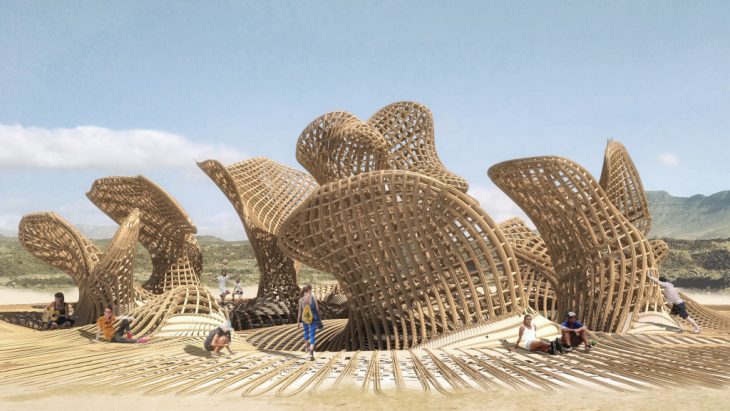
Acropora
Acropora is known as table coral with more than 140 species. Acropora species are some of the major reef corals responsible for building the immense calcium carbonate substructure that supports the thin living skin of a reef. The corals evolved as an important part of the whole ocean ecosystem. Their intricate geometries provide shelter for one-quarter of ocean life. Corals grow towards the sun, and its growth can be shaped by the water currents and location within the colony. The ridges of coral reefs can reduce wave energy by 95% protecting from tsunamis. Unfortunately, roughly one-quarter of coral reefs worldwide are already considered damaged beyond repair, with another two-thirds under serious threat. The corals’ biggest threats are climate change, destructive fishing practices, overfishing, careless tourism, and pollution.
Differential Growth – Process
Differential growth in nature happens when one part of a cell’s growth occurs at a different rate from that other part. Compared with a uniform growth of the sphere, a shape with differential growth can offer more structural rigidity to withstand local loads. Moreover, it allows for better surface area to volume ratio, which is constrained for spheres. Growth in a specific direction in nature can respond to the environment including light, touch or contact with a solid object, water concentrations or heat or temperature changes.
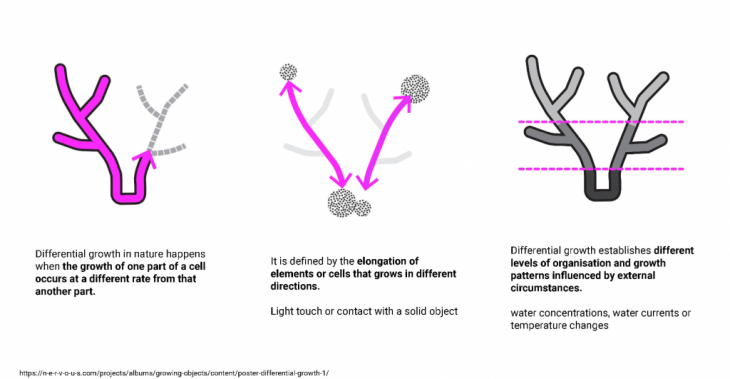
 Design Objectives
Design Objectives
We propose a new pavilion that provides a canopy on extreme weather conditions and functions as a shelter (oasis) that provides different amenities to the community. The structure will promote interaction between people and open space by having a series of urban activities and present a new approach to create landmarks within urban landscapes.

Differential Growth Early Explorations
In the early stages of the designed process, we explored two different options focused on different differential growth approaches. The initial approach was made using SD Platform (Grasshopper Component) to apply differential growth concepts to a specific surface.
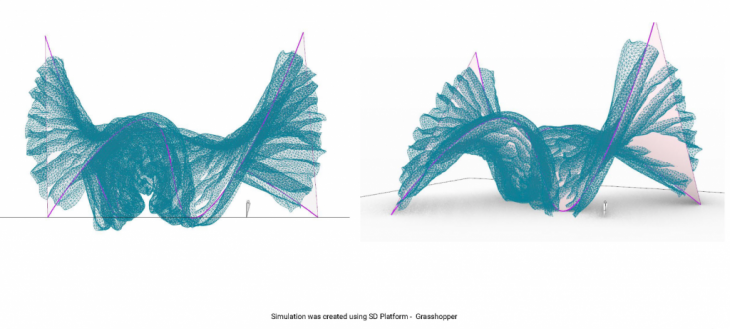
The second approach was made based on the Curly Kale script by Daniel Piker, which uses the Sphere Collision component inside Kangaroo in Grasshopper. This approach aimed to applied differential growth processes to a circumference.
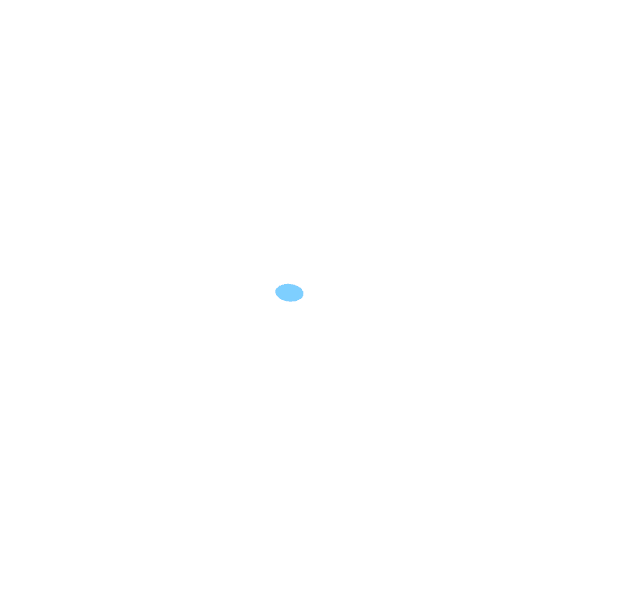

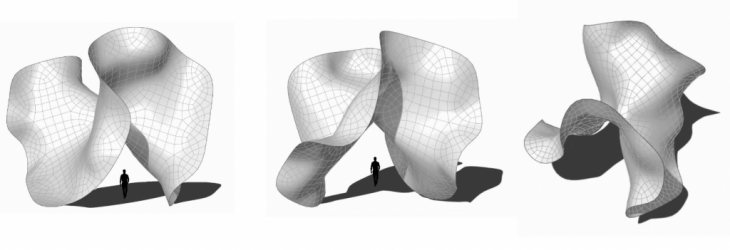
Computational Design Process
As part of the design explorations using differential growth, this project establishes a new computation design process based on the following parameters:
- Radius: Define circle size and the starting point of growth
- Length: Remeshing – Define faces edge length
- Noise: Field manipulation using Perlin noise
- Vector: Extracting face normals
- Attractor: Define attractor location and its power and range
- Distance between faces: Define transfer distance between different faces

Extracting Face Normals

Remeshing

Defining Attractor
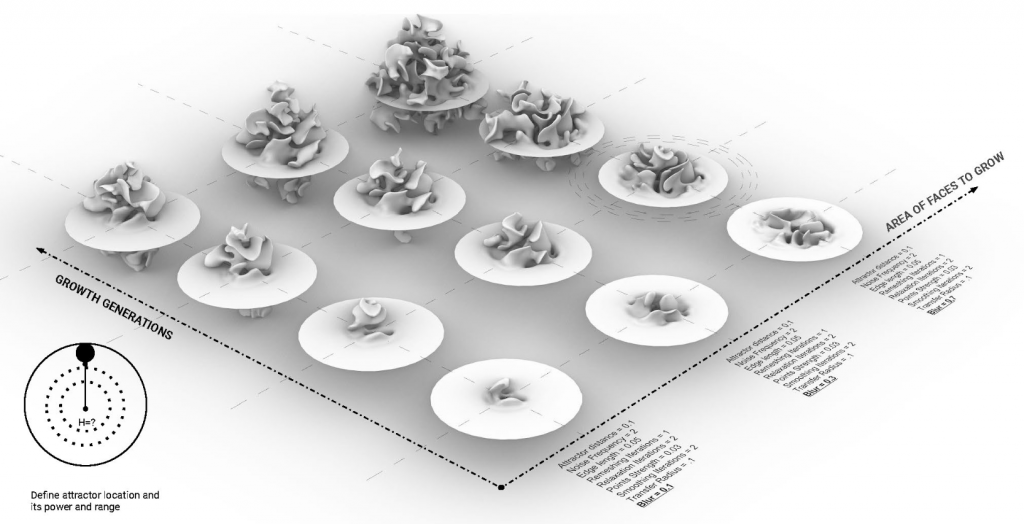
These parameters aim to generate differential growth iterations based on a round surface; in addition to it, the form generation method was established by defining the following parameters:
- 16m in radius land boundary including pedestrian paths and shading elements locations
- Shading elements on a slope
- Mesh growth progress
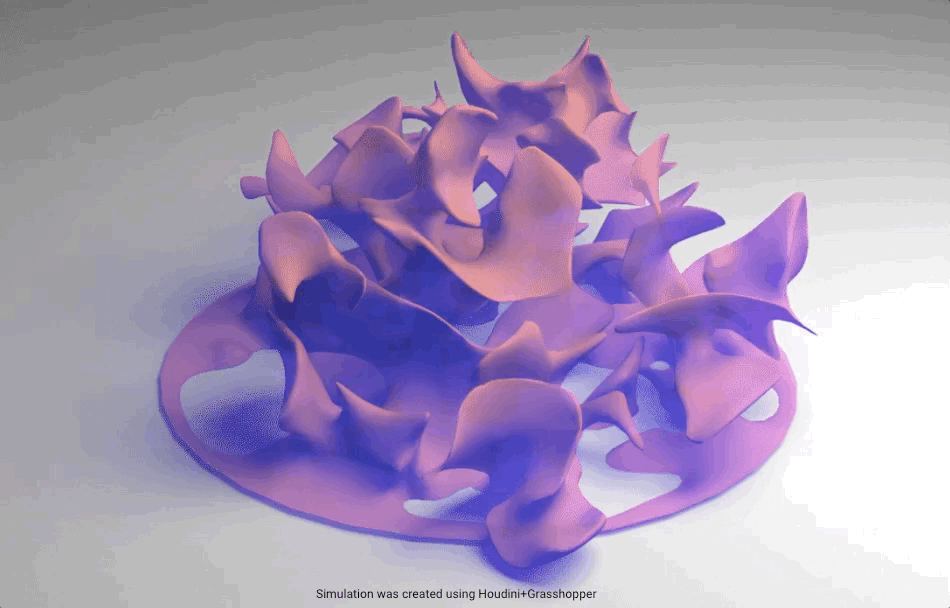
Fabrication Process
We use bamboo as a sustainable structural material that provides the flexibility needed to achieve the complex coral shapes. A re-meshing process was applied to the surface to define vertical and horizontal elements. Vertical elements are composed of multiple 3cm diameter bamboo sticks bundled together; in addition to the 5 cm diameter horizontal elements tie the structure together after lashing with the verticals.

Assembly Process
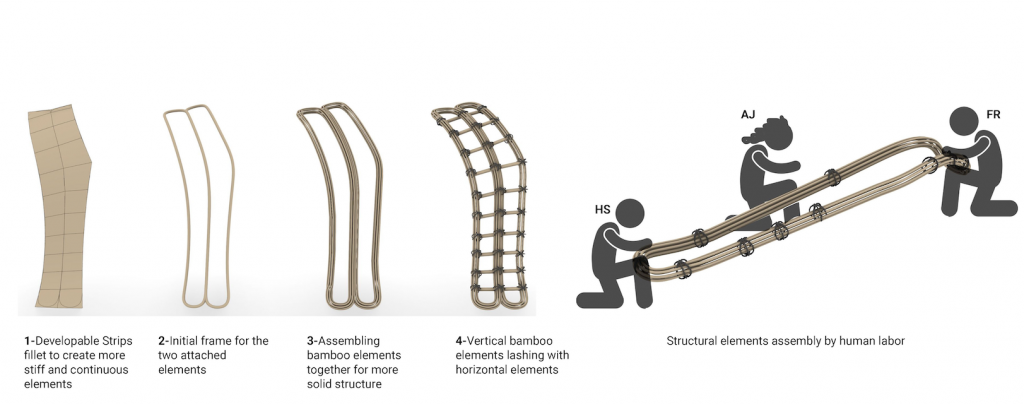
Structural Performance
A preliminary structural analysis was done to identify behaviour for the different connections; this includes vertical & horizontal connections, solid and flat elements at the ground level. Gravity and Wind were applied as initial forces to understand the structural behaviour.
‘
Utilisation Analysis

Displacement Analysis

Architectural Definition
Cross Section

Ground Floor Plan



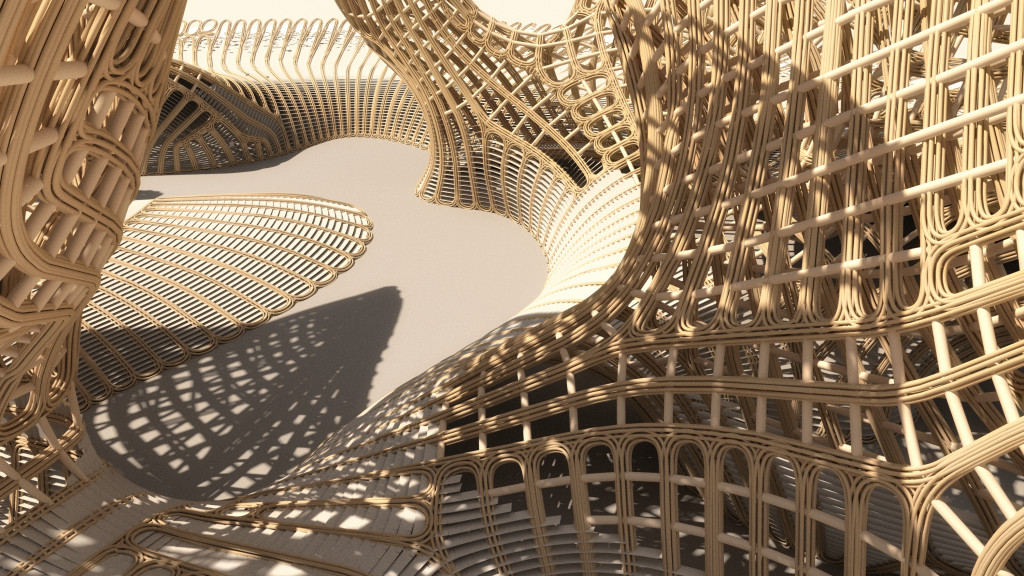
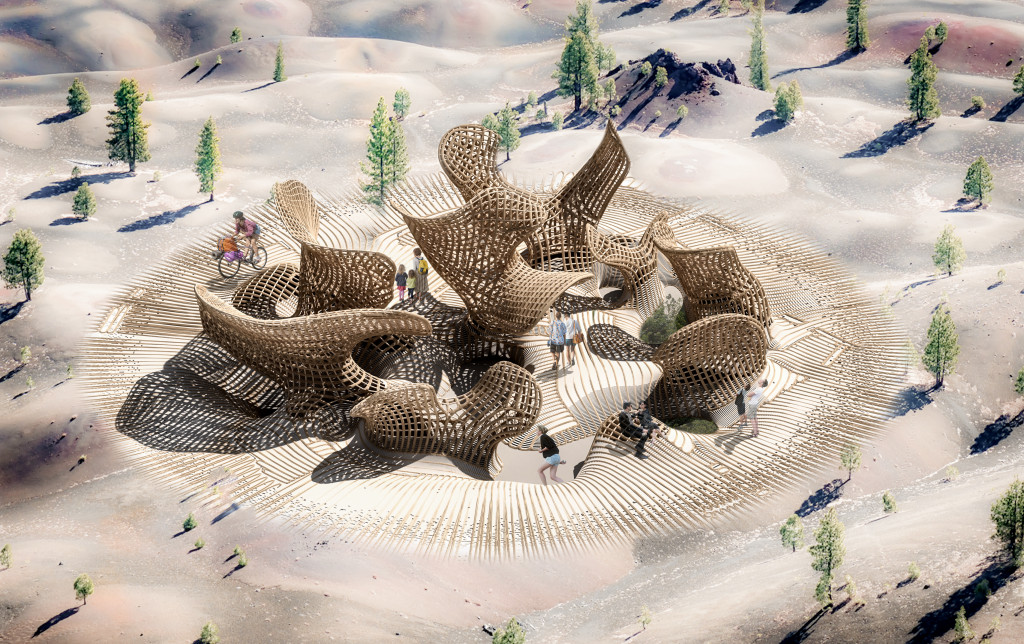
Acropora is a project of IAAC, Institute of Advanced Architecture of Catalonia developed at Master In Advanced Computation For Architecture & Design in 2020 by:
Students: Aleksandra Jastrzebska, Felipe Romero, Hesham Shawqy
Lead Faculty: Arthur Mamou-Mani
Faculty Assistant: Krishna Bhat
